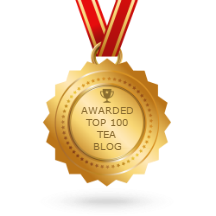When I began exploring tea and tea culture about seven years ago the only thing I knew about matcha was that it was a powdered Japanese green tea used mainly in the Japanese tea ceremony. While it may have had other uses in Japan and elsewhere, here in the U.S., as far as I was aware, it was still quite obscure.

Well, to paraphrase an old advertising slogan of yesteryear, matcha has come a long way, baby. Perhaps it’s already too late to make some kind of grand pronouncement about matcha being the next big thing in tea. That sort of thing is relative and hard to define and, in truth, I’ve been aware of tea merchants who do nothing but matcha for several years now. But matcha is hardly becoming any less popular these days. There are an increasing number of merchants who sell it to the exclusion of all else and at least one takes things a step further, selling only the cream of the crop of premium matcha.
There are a number of reasons why matcha has grown in popularity, the most notable of which is the hype about green tea in general and more specifically the interest in the multitude of tea’s potential health benefits. Also a contributing factor, the fact that matcha is powdered, which makes it more convenient to use in recipes than tea leaves.
For an informal and marginally scientific look at the growing popularity of matcha consider that the term does not appear at all in the Google News archive prior to 1900 and the earliest reference in Google Books came in 1885, in The Gardeners’ Chronicle, which billed itself as “a weekly illustrated journal of horticulture and allied subjects.” It refers to matcha as powdered tea from Japan “usually used only in the homes of nobles and of the rich.”
During all of the twentieth century the only Google News reference to matcha came in a 1994 New York Times article claiming that tea had somehow managed to become hip. Over the course of the first five years of the new century there were no references and in the five years after that only 19 references. In the year and half or so that make up our current decade there have already been 118 references. Which, for my money, is a fairly convincing argument for the thesis that matcha’s popularity is actually growing.
© Online Stores, Inc., and The English Tea Store Blog, 2009-2014. Unauthorized use and/or duplication of this material without express and written permission from this article’s author and/or the blog’s owner is strictly prohibited. Excerpts and links may be used, provided that full and clear credit is given to Online Stores, Inc., and The English Tea Store Blog with appropriate and specific direction to the original content.



Leave a comment